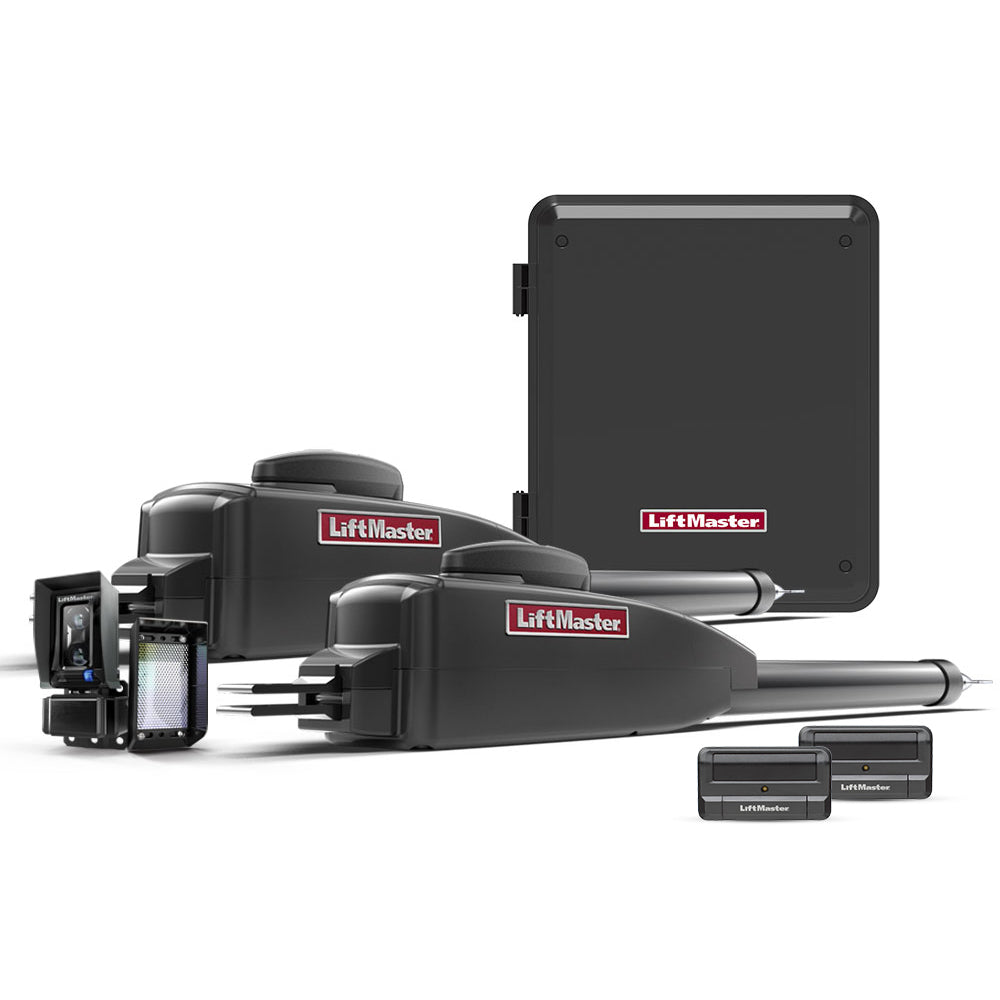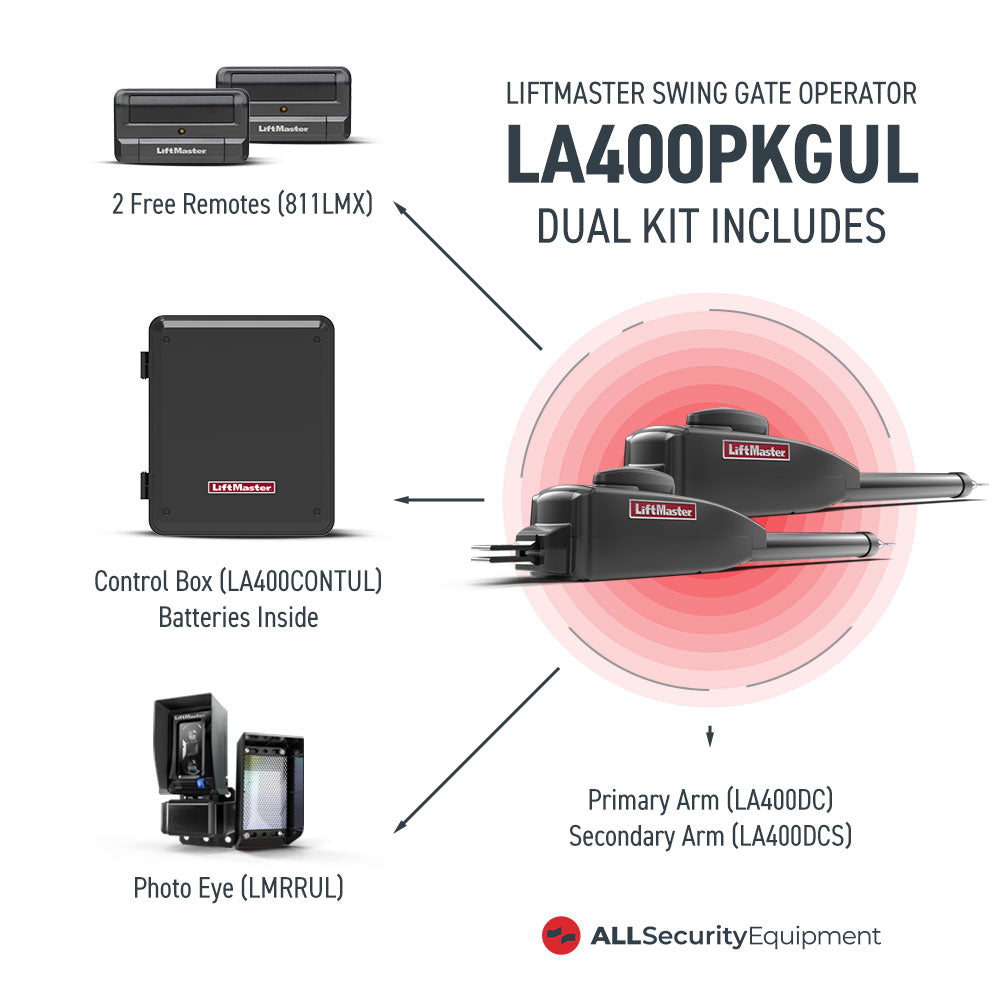It is no secret that garage door openers carry out all the heavy lifting for you and lets you enjoy convenience by opening your home's entrance without letting you step out of your vehicle.
However, not all openers are the same, and you must choose the right sizes to ensure that you don't face any operational or malfunctioning problems in the future.
A large door opener with extra power can cost you money, while the fragile motor of a smaller one can't handle all that excess wear and tear. Therefore, it is essential to pick the appropriately sized garage door openers.
But how should you do that? Don't worry, since our blog post is here to help you out with your garage door system.
Importance of Measuring Your Door Before Purchasing a Door Opener
When selecting garage door openers, it is essential to select a type and model that is compatible with the specifications of your door and is suitable for your garage and door opening.
To do this, you must take accurate measurements of your garage and its door size to determine the opener's suitability. And, if you don't, you may have an opener that will not function or a garage door that won't open.
So, get your measuring tape ready as we dive straight into the process of measuring your garage door for your new garage door opener!
How to Measure
If you are unsure about the compatibility of your garage door opener with your garage door size, measuring the door can be beneficial. It is a simple process that takes no more than 20 minutes.
Some of the common and standard garage door sizes are 9x7, 8x7, and 16x7. And the only way to find out where your garage door belongs is to take the measurements.
Note: There are various types and designs of garage doors with varying dimensions and requirements. A professional must verify the measurements before selling a new garage door opener, and it is always recommended to have an experienced garage door installation professional assist you in locating an opener that is perfect for you and your garage door installation.
Height
Measure your garage door's height (vertical length) from its top point to the lower end. This is the distance between the floor level and the top of the door. Check for any imperfections like uneven floors and take note of any irregularities.
Width
Measure the width of your garage door (horizontal length, from left to right). Use your tape measure to determine the measurement and take several readings from various points to ensure it is accurate and precise.
For reliable results, cover the inside of the garage door opening with a piece of wood measuring 2 inches x 6 inches before taking the measurements, and avoid any irregularities like jambs that aren't square or are uneven.
Side Room
Measuring the width of spaces adjacent to the door opening is equally important as measuring its height and width.
The side room refers to the area to the right and left of the doors or the distance from the door's jamb to the closest obstruction, mostly a wall. Sometimes these obstructions can also be in the form of track brackets, shafts, or torsion springs.
At times, wires can also hamper the garage door opener installation process so make sure you take note of them or any other barriers which can cause hindrance. These notes will help make installation much easier.
A maximum of 5'' must be available on each side to mount the track that runs vertically. Side-mounted openers have specific side space specifications. However, if you are deviating toward the double-door installation, the center post must be at least 10 feet wide for effortless operation.
Headroom
Headroom refers to the space between the ceiling and the top of the garage door. If you don't have the proper spacing, your garage door opener won't fit or function.
Most regular automatic openers need at least 12 inches of clearance overhead, while some require 18 inches. Therefore, always confirm the measurements with your garage door installer before purchasing your door operator.
Ensuring the headroom measurement is correct will enable the opener to go within the circle of the track handily without striking the ceiling.
When measuring, account for any obstructions blocking the ceiling—lighting, sprinklers, electric outlets, shelves, etc.
Back Room
The next step is to measure your garage's backroom or depth. It is the distance from the entrance to the back wall of the garage. The backroom is essential in ensuring that doors, the opener, and horizontal tracks have enough room to be put into place.
Remember that electric motorheads are usually located about 9.5" to 11.5" away from the entrance to the garage (for standard 7×8 high doors), so make sure a power outlet is within the above-mentioned distance of your door opener.
When determining the depth, it is also necessary to look for obstructions, such as the attic, planks, or lights, which could be hanging and blocking the construction.
Highest Point of Travel
The highest point of travel is the distance measured from the ceiling up to the highest part of the door's leading edge. Sectional doors need at least 2.5" long highest point of travel for the feasible installation of a door opener.
Once you complete your residential garage door measurements, you are all set to find a new door opener. You can refer to a standard chart size or tell the dimensions to your technician to get the right size door opener for your garage.
Motor Sizes
A residential garage door opener with an AC motor typically operates at ½ horsepower or 500 Newtons. If you have a single door, then this motor size is appropriate. If you have a double door (16x7) or a solid, heavy door, you will need a ¾ horsepower or 700 Newton motor.
In addition to the size and power of your motor, you also want to consider its projected life. Some garage door openers will last for seven years, while others can last double this amount of time.
After determining what size garage door opener you need and after a successful installation process, you can consider other accessories like garage door monitors and remote light switches.
Ready to Purchase Your New Garage Door Opener?
Now that you know how to measure your garage door, it’s time to purchase a new opener! If you have any questions about what size garage door opener you need or which model is right for your home, contact our team of experts. We would be happy to help you choose the perfect opener for your space and answer any other questions you may have.












